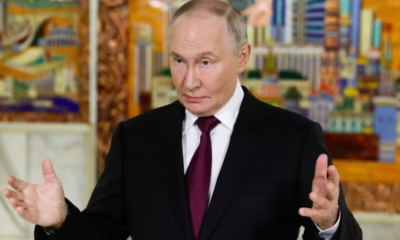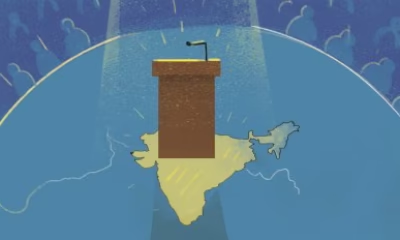
|
Getting your Trinity Audio player ready...
|
Proactive diplomacy together with greater attention to soft developmental needs of the neighbours like connectivity, education, finance and healthcare is the need of the hour for India’s foreign policy mandarins.
There is a possibility of the immediate neighbours being inimical, while the neighbour of the neighbour, in the second circle, could be a friend. (File)
Kautilya’s theory of Rajamandala — the “circles of kings” — may not be fully relevant in the present-day context. But it should always be kept in mind while dealing with neighbouring states. The Mandala theory suggests that there will be 12 concentric circles of neighbouring states and describes each of them as a friend or a foe. There is a possibility of the immediate neighbours being inimical, while the neighbour of the neighbour, in the second circle, could be a friend.
The Mandala theory is about probability, not certainty. Countries that rub shoulders with each other should make an extra effort to ensure goodwill and friendship. Between Kautilya’s period and now, countries have developed the art of diplomacy sufficiently to redefine neighbourly relations. Yet, challenges remain, occasionally reminding us that “your neighbour could become your potential adversary”.
India, over centuries, has successfully defied this doctrine by using the soft power of its religion and culture. In one of the earliest attempts, it used Buddhism to cast a “Sanskritik mandala” or “cultural circle” around its geography. The Buddhist circle of influence began during the reign of Emperor Ashoka and included Ceylon, Burma, Nepal, Tibet, Central Asia, China, Japan and Indochina which accepted the Buddha’s Middle Path.
Renowned French Indologist and Sanskritist Sylvain Levi described this phenomenon beautifully: “India gave her mythology to her neighbours who went to teach it to the whole world. Mother of law and philosophy, she gave to three-quarters of Asia a god, a religion, a doctrine, an art. She carried her sacred language, her literature, her institutions into Indonesia, to the limits of the known world…”
It was much later, in the 1980s, that Joseph Nye, the American political scientist coined the phrase “soft power”, denoting the ability of nations to influence others without using force. Nye’s concept is dying a slow death. Countries are becoming suspicious of each other’s cultural, academic and even religious engagements. This suspicion is largely the result of countries like China using the “power” aspect of soft power as a tool to spread their dominance. China’s “thousand talents” programme, launched in 2008, to spot and attract talent from the world over, and Xi Jinping’s campaign codenamed “fox hunt”, to locate and neutralise anti-CPC elements in the Chinese diaspora, have led to heightened suspicion about its soft power initiatives. These include the Confucius institutes and collaborative university programmes.
In the US, the Donald Trump administration is going after them. “The Chinese government is engaged in a broad, diverse campaign of theft and malign influence, and it can execute that campaign with authoritarian efficiency. They’re calculating. They’re persistent. And they aren’t subject to the righteous constraints of an open, democratic society or the rule of law”, protested the FBI Director Christopher Wray at a Hudson Institute event recently.
The Chinese will continue the malicious use of soft power. Confucius institutes are a conspicuous presence in India’s neighbourhood and Mandarin has found its way into school curricula. But the limitations of soft power are bringing back the assertions of hard power. As the cultural circles are weakening, Rajamandalas are returning with a difference. Neighbours and neighbours’ neighbours too are posing challenges.
After Bangladesh’s decision last September to hand over the construction of its first submarine base near Cox’s Bazar to China, which sold two submarines to it in 2018, came the news of Iran going ahead with the remaining work on the Chabahar port without India’s support. Iran’s decision should alert India in the light of the ongoing debate in the Iranian parliament over a proposed sweeping economic and security partnership agreement with China.
The New York Times was the first to report the details of the 18-page agreement between the two countries. According to NYT, the agreement would facilitate China’s direct presence in Iran’s strategic sectors like banking, telecommunications, ports and railways. China would, in return, get highly-subsidised Iranian oil over the next 25 years. Of particular concern to India could be the military cooperation embedded in this agreement that would facilitate “joint training and exercises, joint research and weapons development and intelligence sharing”.
Two aspects of the proposed agreement call for greater attention from India. First, the decision to hand over two ports in the Gulf of Oman to China for development, one of them at Jask just 200 miles away from the Chabahar port. Second, the co-option of the Central Asian republics into this agreement. This comes as a direct challenge to not only India’s traditional ties with these republics but also to the US-led programme of C5+1 under which the US has established multilateral programmes with five Central Asian republics.
India traditionally has strong ties with Iran that withstood several pressures from the West. This time, the challenge comes from the eastern neighbour.
“Neighbourhood First” has been the sheet-anchor of India’s foreign policy at least since the inception of the SAARC. Prime Minister Narendra Modi has invested heavily in the neighbourhood in the last six years to create strong diplomatic bonds. He has extensively used his soft power skills to generate enormous goodwill for India and himself. That popular goodwill remains a great advantage.
However, soft power, which includes cultural and civilisational bonding, continues to give diminishing dividends. Nations in the neighbourhood are growing uncomfortable over the over-emphasis of “oneness”, as the urge for “uniqueness” is the flavour of the season in each country.
It is time India turns more towards Modi’s second principle — “together we grow”. Proactive diplomacy together with greater attention to soft developmental needs of the neighbours like connectivity, education, finance and healthcare is the need of the hour for India’s foreign policy mandarins.
(The article was originally published in Indian Express on July 16, 2020. Views expressed are personal.)



